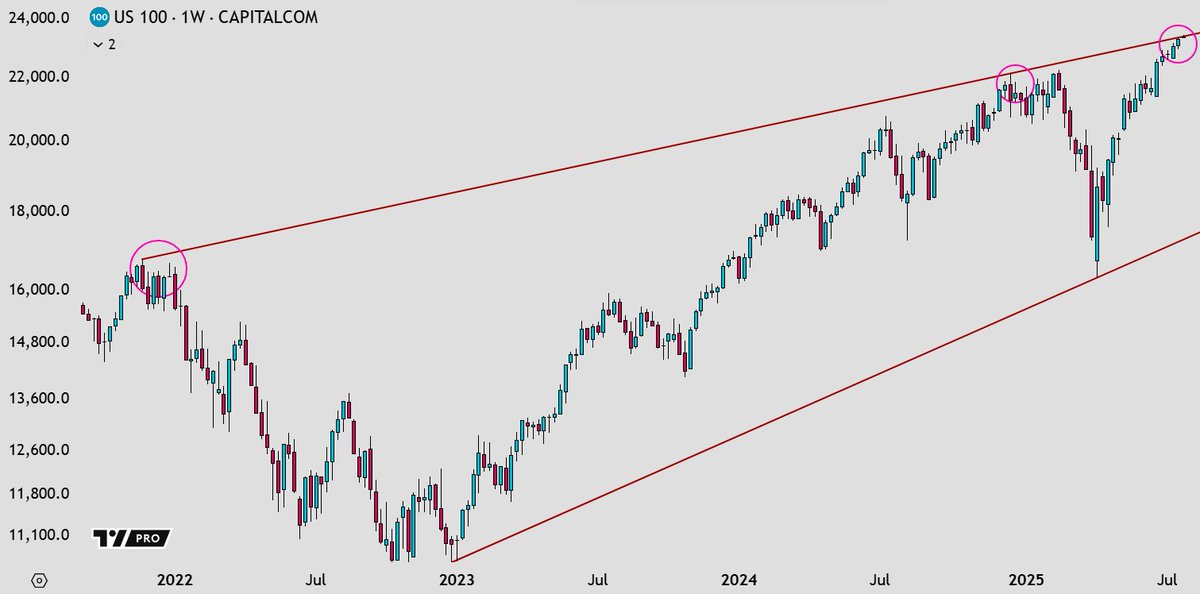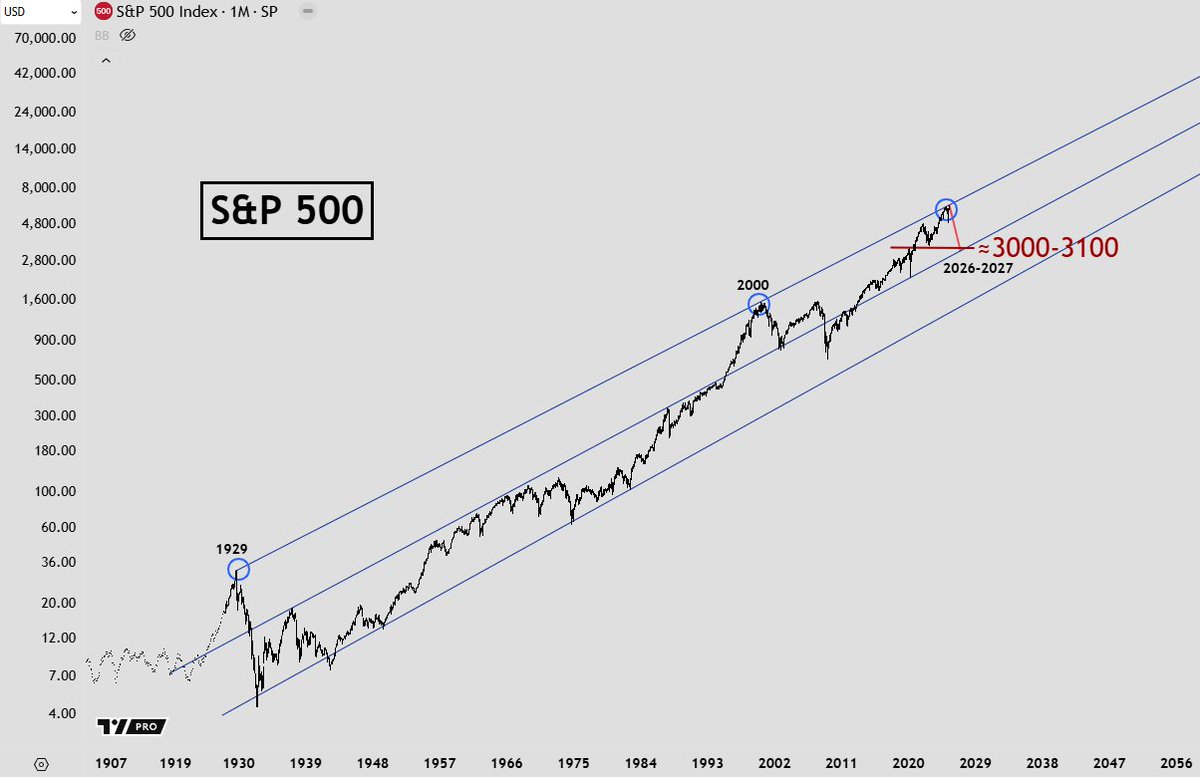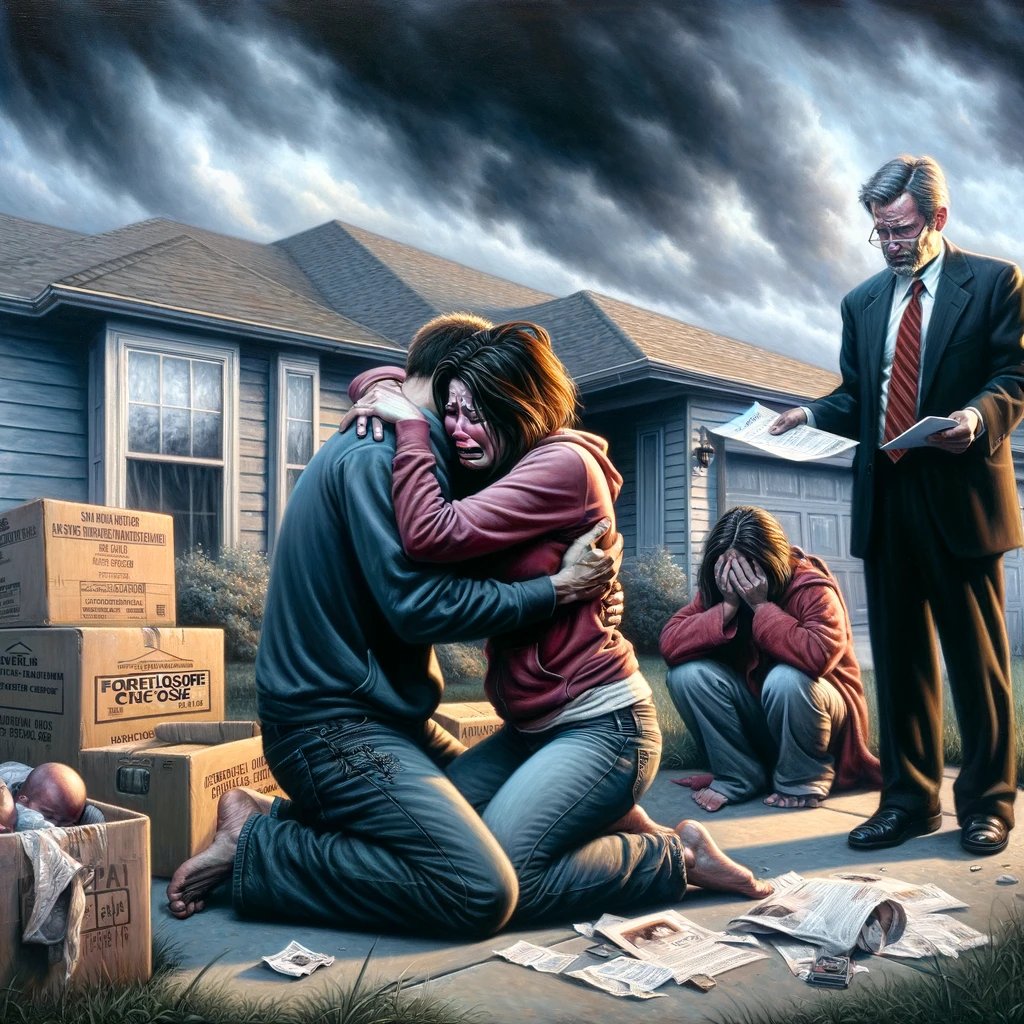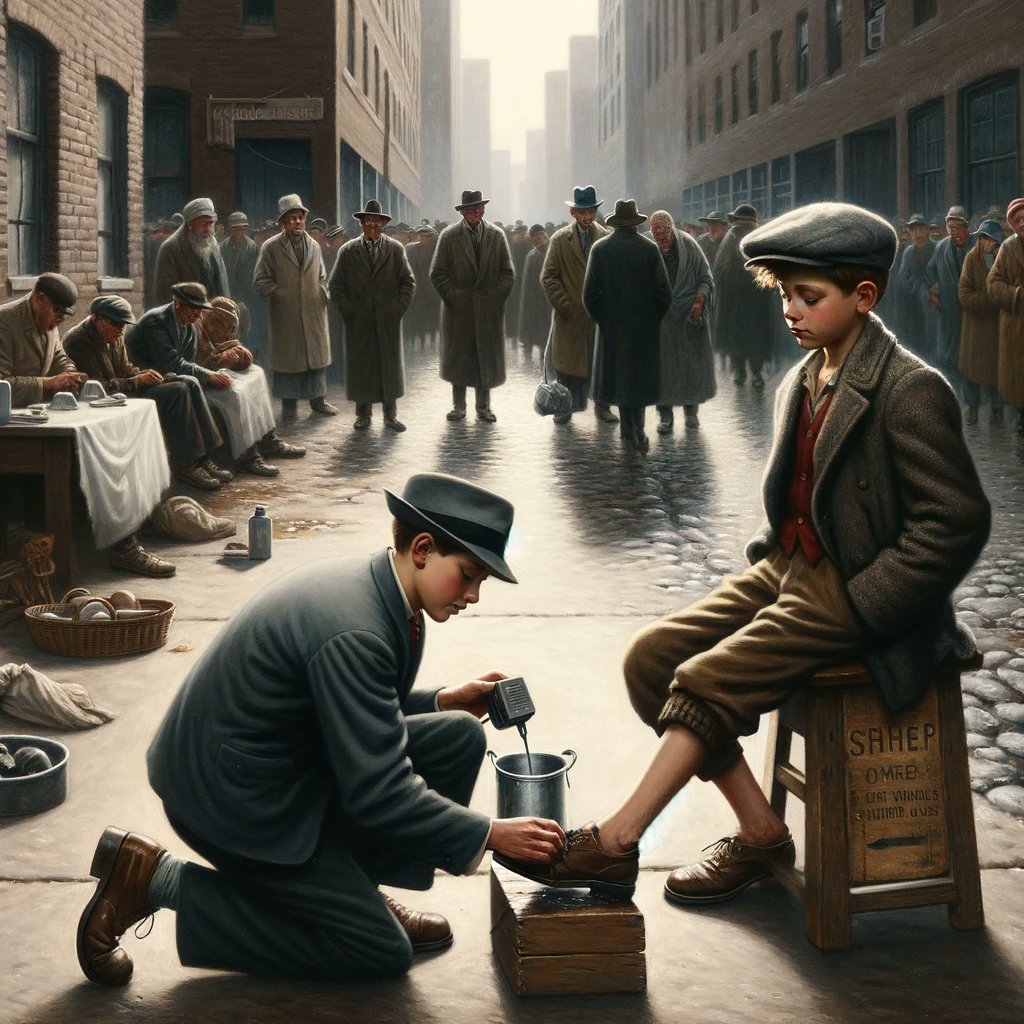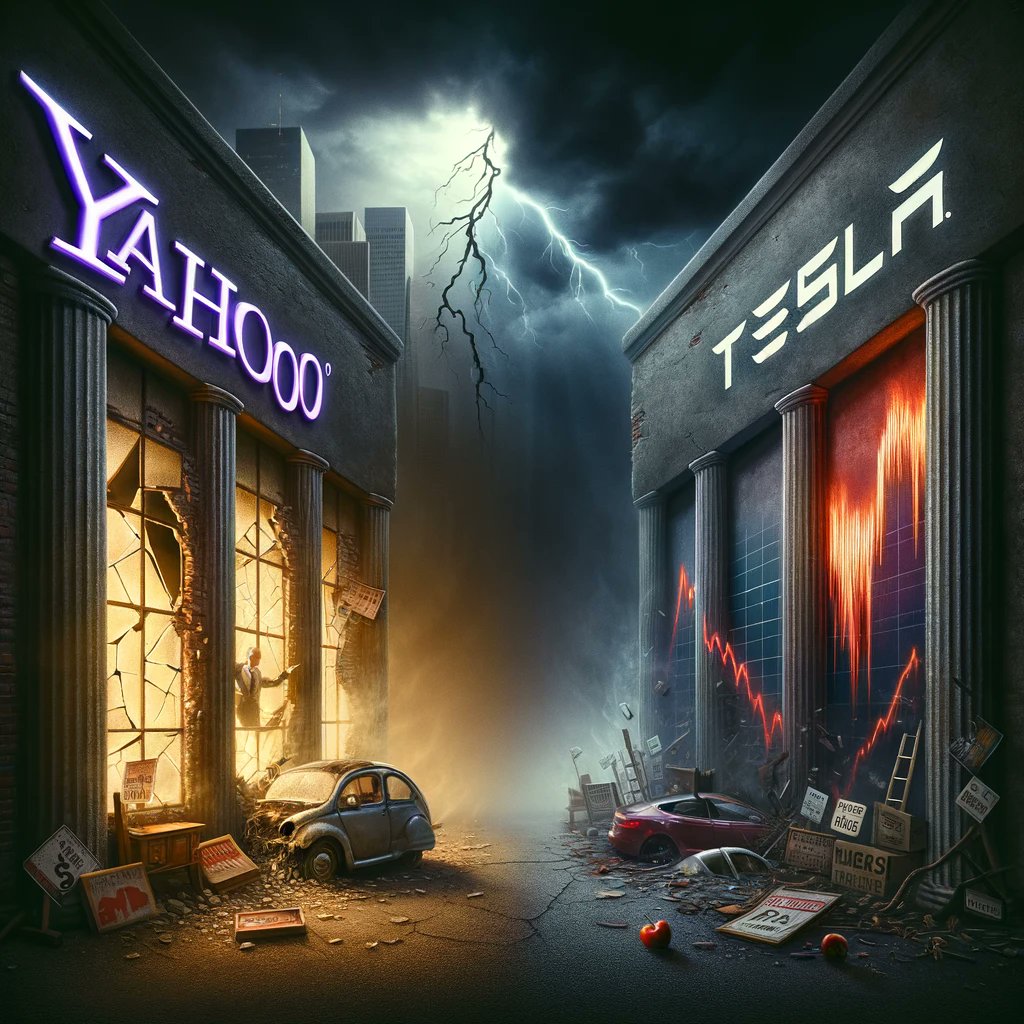🚨Get ready for a massive crash!🚨
I'm predicting that the S&P 500 and other indices will plummet an additional 40% from their current levels. Here's why:
I'm predicting that the S&P 500 and other indices will plummet an additional 40% from their current levels. Here's why:
1/ The recent rally was due to a decline in yields, as the market thought the FED would cut rates. But during the last FOMC meeting, J. Powell made it clear that more rate hikes are likely and the job isn't finished. Yields are now reflecting this and starting a new upward trend. 

2/ The yield surge will result in a stronger US dollar. I predict a "double top" or a slightly new high for DXY. The surge in the US dollar will decimate equities and commodities, leading to a steep and illiquid sell-off. 

3/ During a bear market, the largest percentage declines often happen at the end, leading to a significant decline in prices. 

4/ The S&P 500's current price structure resembles 1973-1974, with similar megaphone patterns and shared factors of inflation and an oil crisis. If my forecasted steep, illiquid sell-off occurs, the market could fall another 40-55%. 

5/ Even the price structure of the Russell 2000 is sending a clear warning. It is in a clear rising wedge formation, which typically leads to a pullback to Wave 4. 

6/ The Federal Reserve's rapid rate hikes are causing lower corporate earnings, hurting consumer spending and business investments. This will lead to a stock market crash as lower earnings decrease a company's stock price and make it less attractive to investors. 

7/ Bonds have been in a bull run since the 80s. I expect one more rally next year due to recession, but after that, rates will reverse and hit double digits later this decade. This will be a drastic change from the disinflationary environment we are used too. 

8/ Rising interest rates are a major threat to stocks. They make borrowing more expensive for businesses, which hurts their profits and lead to a decrease in demand for their products or services.
9/ Tech stocks are likely to underperform in an inflationary cycle, while sectors such as consumer goods and services may be more likely to benefit from rising prices. Commodities may also be a good option, as they may be able to maintain or increase their value.
10/ Passive investing through index funds may not be as successful in the coming years as active management. As interest rates rise, we will see a shift from passive to active management as the market makes higher lows and lower highs.
11/ The end of the supercycle will bring a significant loss of wealth and a long downturn in the stock market, with stock prices falling and new highs in the indices unlikely for at least a decade. The cyclical bear market has begun. 

🚨Get my latest predictions and market insights on Telegram and YouTube🚨
Follow me on Telegram: t.me/therealmfhoz
Subscribe to my Youtube Channel: youtube.com/@mfhoz4694
Follow me on Telegram: t.me/therealmfhoz
Subscribe to my Youtube Channel: youtube.com/@mfhoz4694
• • •
Missing some Tweet in this thread? You can try to
force a refresh


